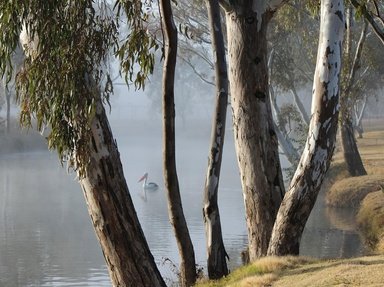Quiz Answer Key and Fun Facts
1. Three rivers in the Northern Territory in Australia are all named after a ferocious creature not even native to this country. What is their one name?
2. With a name similar to a man who jumped out of a plane, which famous Australian river is referred to as a creek?
3. On which graceful bird-filled river in Western Australia is the capital city of Perth located?
4. Found in the Kimberley region of Western Australia, which briefly named river features Western Australia's most northerly estuarine system?
5. In which regal Australian state is the Flinders the longest river?
6. Is it true, really true, that Melbourne's Yarra River was once historically known as the Yarra Yarra River?
7. Which meteorologically named river in south eastern Australia gave birth to the country's huge hydro electricity scheme?
8. Which affectionately named river in New South Wales is the third longest river in Australia?
9. Can you name the river on which Hobart, the capital of Tasmania, is located?
10. Is it true that the Endeavour River in the far north-east of Queensland is the site where Captain Cook's famous ship was beached in 1770?
Source: Author
Creedy
This quiz was reviewed by FunTrivia editor
agony before going online.
Any errors found in FunTrivia content are routinely corrected through our feedback system.

